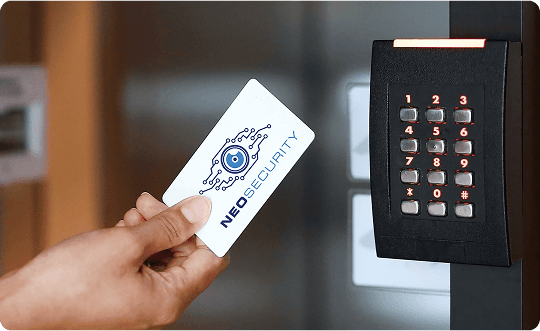
Proximity Cards
Proximity Cards: Your Key to Seamless Access Control
Security is no longer optional it’s essential. The question every business, school, or organisation faces is simple: how do you make sure only the right people get through the door? One of the most reliable and convenient answers is the proximity card.
A proximity card works without contact, making access fast and secure. When the card comes close to a reader, the radio wave from the reader powers the card’s antenna. The card’s microchip then sends its unique ID number back to the system, which checks if it’s authorised. If the credentials match, the door unlocks instantly; if not, access is denied.
There are two types of proximity cards. Passive cards are the most common, with no battery, powered solely by the reader. Active cards contain a small battery, allowing for longer read ranges and added security features such as tamper detection.
The benefits are clear. Proximity cards are convenient no keys or PINs to worry about. They’re secure, with unique IDs that can’t easily be copied, and lost cards can be quickly deactivated. They’re flexible too, working not just for doors but also for time and attendance systems, parking, and even cashless vending. On top of that, they’re durable enough for everyday use and cost-effective to install and maintain.
That’s why proximity cards are used everywhere from office buildings and schools to hospitals, government facilities, and residential complexes. Whether it’s safeguarding sensitive records, managing student access, or controlling entry to gated communities, proximity card systems offer a proven solution.
At NEO Security, we design, install, and maintain proximity card access systems tailored to your needs. Our solutions help businesses and organisations improve security, enhance convenience, and stay in control of who has access.
Ready to take the next step in securing your premises? Contact NEO Security today and let us help you build smarter, safer access control.






